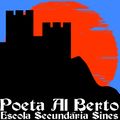Linear Momentum Conservation
Contents
Decription of the Experiment
The pedagogic purpose of this experiment is to teach users about concepts like reference frame, center of mass and conservation of linear momentum.
This experiment encompasses not only conservation of momentum, it also shows the collision in four different reference frames: the center of mass's, each vehicle's and Earth's.
To achieve this, two cars are launched and will collide with eachother and, while that happens, the control sistem calculates the speed at which the camera should move to film the reference frame chosen by the user.
By recording and reviewing the video, the user can see all the physical phenomena. The control room gives the cars' inicial and final speeds.
Who likes this idea
This idea is the result of the PEC26 contract with Ciência Viva - The portuguese Agency for Cientific and technological Culture and its objectives are (i) sharing (through the internet) existing experimental setups that some high-schools have but are not in use and (ii) promote teaching cience through the use of experimental activities. The automation of the experiment was made by IST students as part of the e-lab project.
The first school involved in this experiment were Escola Secundária Padre António Vieira, Alvalade/Lisboa and Externato Cooperativo da Benedita, Leiria. Escola Secundária Poeta Al Berto in Sines also colaborated.
Experimental Apparatus
The setup is composed of an hollow air rail with tiny holes that, along with an air compressor, create an air flow. This air flow is equal along the rail (just like air hockey tables) and it allows the cars to slide with minimum friction. This rail is marked in segments of 100mm long blue rectangles that allow a complete and thorough study of the experiment, through image processing.
Two electromagnets (one at each end of the rail) made from linear solenoids and controlled by a microcontroller send a pre-configured pulse that launches the cars. The inicial speed of both cars are immediately measured by a photocell, by measuring the time the cars' flags interrupt the sensors.
Both car A (215.4±1 gr.) and B (237.1±1 gr.) have two flags with width 10±0.2 separeted by 20±0.2 mm that interrupt the cell one after the other. This "double measure" of time allows an estimation of the experimental error.
The Cars
Despite the name, it looks nothing like a car. On the photo on the right we can see the 4 main parts:
- A metal triangle that fits on the rail;
- A rubber band in the front to make the collision as close to elastic as possible (it's impossible to create a perfectlly elastic collision, but this setup allows us to come close to it);
- An U-shaped flag on top that interacts with the photocells;
- A permanent magnet that will be repelled by the electromagnet, creating the pulse that starts the motion.
What's a photocell?
O photocell is a light sensor (photodiode) and a LED light. By measurung the time the flag interrupts the path between the two parts (emitter and receptor) and knowing the lenght of said part, we can determine the speed of the car.
Protocol
UNDER CONSTRUCTION
Advanced Protocol
UNDER CONSTRUCTION




